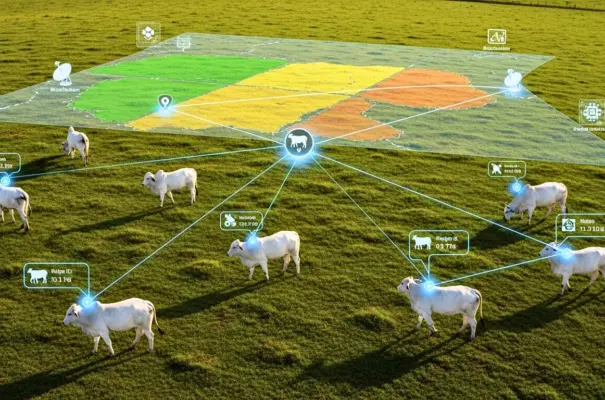Meat traceability has ceased to be merely a differentiator and has become a requirement in international markets increasingly attentive to food provenance. To meet these demands, the cattle industry has resorted to a set of technologies: electronic ear tags that function as digital animal identification, georeferencing systems allied with satellites, artificial intelligence applied to pattern identification, and even blockchain to ensure immutable records. By making the origin and history of each animal visible, these solutions help reduce the risks of purchasing cattle from deforestation areas, strengthen compliance with socio-environmental criteria, and bring the sector closer to global sustainability goals.
In the last five years, the adoption of technologies in the field has grown expressively. According to the GS1 Brazil Agrotech Index 2025, the cattle industry registered a 29% advance in automation. The survey considered different stages of the cycle, including soil preparation and management, as well as herd raising and feeding.
Initiatives that point the way
Technology companies like GPX have been advancing with blockchain-based solutions in cattle farming. These systems record management, feeding, and environmental practice data, offering greater transparency and reliability in traceability, as explained by the Agrozil portal.
In the leather segment, there are already concrete blockchain applications: a system adopted by a production chain has managed to trace 200,000 animals, combining individual identification, geographic monitoring, and socio-environmental checks, according to a report by Portal Agro Summit.
Other initiatives, led by South American exporters, show that traceability goes beyond a specific innovation. In 2023, Minerva Foods carried out the first shipment of leather certified as fully traceable by an independent audit (SBCert), according to the NGO Mighty Earth. The milestone demonstrated how traceability solutions are also beginning to extend to livestock by-products.
What already works in the field
Individual identification
The starting point is to ensure that each animal has a “unique identity.” This is done with electronic ear tags, radio-frequency identification (RFID) chips, or visual codes, associated with digital records maintained in a database. The use of these devices allows the animal to be linked to information such as date of birth, vaccination, movements between properties, and production history.
Georeferencing and satellite monitoring
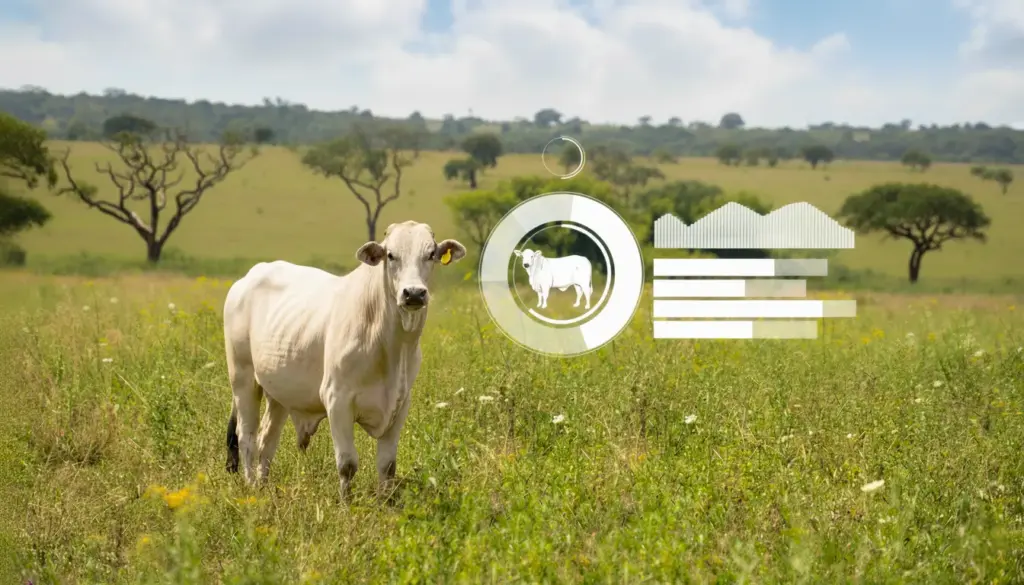
Photo: scharfsinn86/ Adobe Stock/ Modified with IA
After identifying the animals, the next challenge is to verify that they originate from environmentally compliant areas. To achieve this, Geographic Information System (GIS) tools combine data from territorial databases and recent satellite imagery to check, through this integration, for overlaps with embargoed areas, deforestation, or recent vegetation removal, as well as changes in land use. These data cross-checks help to “map territorial risk” and not just the individual origin of the animal, which is a way to extend traceability to the environmental context.
Embrapa has developed a new methodology, released in July of this year, that allows for pasture monitoring using satellite imagery and climate data with up to 86% accuracy, without the need for permanent field visits.
Blockchain for integrity and transparency
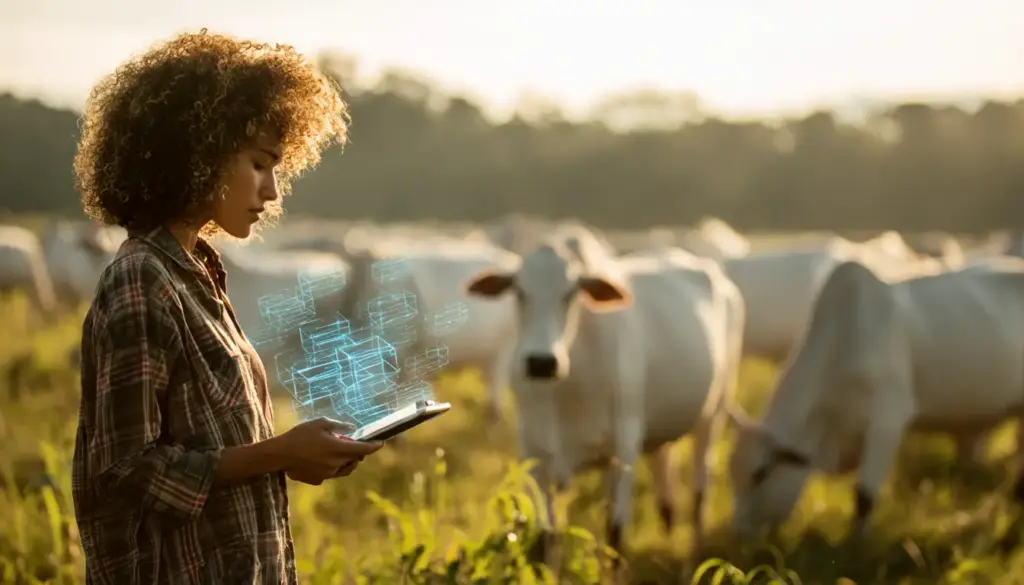
Digitally generated image
The tool is considered an element of trust, as distributed records make it much more difficult to alter or falsify data without detection. In the cattle sector, its use allows for the incorporation of information from the land where the animal was raised to environmental records, movements, health occurrences, among others, as explained by the National Blockchain Observatory. Companies can use blockchain to trace the production of meat and leather, with protocols that ensure each property and each stage of the chain are recorded in an auditable manner.
Interfaces with the consumer
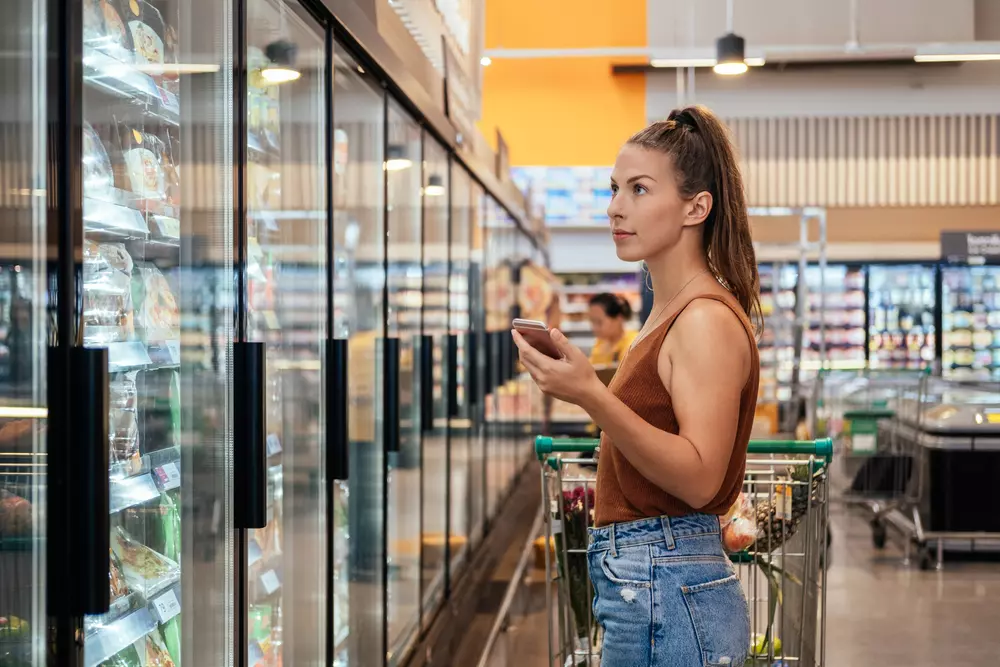
One of the final stages of traceability is making some of this data accessible to the consumer, usually via QR Codes or apps. This type of interface allows the buyer to verify the food’s trajectory in search of certified products. This “visibility” can create a competitive advantage, as consumers tend to value provenance, sanitary safety, well-being, product quality, and clarity of origin.
Technologies applied: visible results and challenges
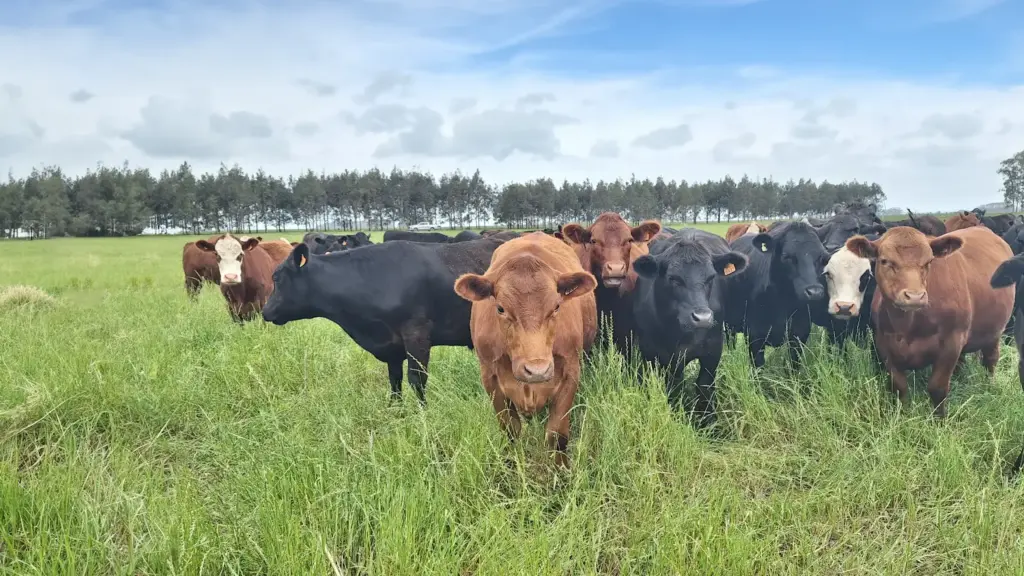
Photo: Minerva Foods
The application of these tools has direct impacts on how the sector meets market demands, deals with sanitary risks, and builds value with consumers. Meat traceability is no longer just a competitive advantage; it has become a requirement for accessing international markets. The European Union, for example, has established stricter rules to prove that suppliers are not linked to deforestation areas, which pressures Brazil to advance in digital individual identification systems. The National Plan for Individual Identification of Cattle and Buffaloes (PNIB) foresees the start of individual identification between 2027 and 2029, with the goal of covering the entire herd by 2032. Some states already have local initiatives: Tocantins, for instance, implemented its state system for individual identification and traceability in 2025, integrating with the national plan.
In addition to meeting external requirements, the use of technology in traceability helps reduce internal risks. In contamination situations, for example, individual identification allows for the rapid location of affected batches and speeds up recalls. It also adds value to the final product: traced meats and by-products gain premium appeal, increase consumer confidence, maintain competitiveness in global trade, and improve the perception of sustainability in national livestock farming, according to experts interviewed by Forbes Brasil.
However, progress still faces barriers. The cost of devices and systems is a burden for small and medium-sized producers, while connectivity in rural areas remains limited. There is also cultural resistance to digitalization, in addition to the difficulty of integrating different platforms. Finally, the link of indirect suppliers remains the most critical point, with the difficulty in ensuring that all links in the chain adopt uniform traceability standards, as shown by a WWF Brasil study.
What to expect in the coming years
The expectation is that traceability technology will become more integrated and sophisticated. Interoperable blockchain models will allow different regional and sectoral chains to “talk” to each other securely.
Computer vision and AI-powered biometrics are expected to advance in identifying animals through images of their coat, body, or snout, reducing reliance on physical devices, as shown in a report by Agro Estadão.
IoT sensors are also expected to gain ground, through GPS collars and environmental equipment to monitor herd health and movement in real-time.
Another central point will be the integration between public and private systems, ensuring that data from governments, industries, and certifiers circulate securely. The advancement of this application, however, still faces obstacles for small and medium-sized ranchers. According to a report by Insper Agro Global, this group is poorly covered by private investment banks, which limits access to credit and financing for digital technologies. Furthermore, many producers lack technical assistance and information systems to support their adaptation to traceability requirements. To reduce these barriers, the creation of specific public policies is fundamental, such as credit lines with reduced interest rates and tax incentives for projects that promote complete traceability. Without this type of support, there is a risk that smaller producers will be left behind in the process, widening inequalities within the production chain.
IoT sensors are also expected to gain ground, through GPS collars and environmental equipment to monitor herd health and movement in real-time.
Reference sources:
- Agrotins 25 anos: governador Wanderlei Barbosa lança sistema de rastreabilidade de bovinos e bubalinos do Tocantins
- Biometria de focinho: inovação para a rastreabilidade bovina
- Brasil Precisa Avançar em Programas de Rastreabilidade Individual de Bovinos
- Ministro Fávaro lança Plano Nacional de Identificação Individual de Bovinos e Búfalos
- Mighty Earth – Rapid Response Cattle Report #3 – Right of Reply
- Quais são as aplicações da Geotecnologia na Pecuária?
- Rastreabilidade bovina
- Rastreabilidade na pecuária: entenda o que é e como aplicar
- Rastreabilidade no agro: 10 motivos para investir agora
- Rastreabilidade individual de bovinos será obrigatória a partir de 2027
- Satélites ajudam a medir capim no pasto com precisão e apoiam pecuária sustentável
- SISTEMA DE RASTREABILIDADE E MONITORAMENTO COMPLETO NA PECUÁRIA DE CORTE BRASILEIRA
- Sistema em blockchain para a cadeia produtiva do couro alcança 200 mil animais rastreados
- Tecnologia blockchain revoluciona rastreabilidade da carne bovina no Brasil
- TRANSPARÊNCIA DA CADEIA BOVINA NO BRASIL DESAFIOS E OPORTUNIDADES
